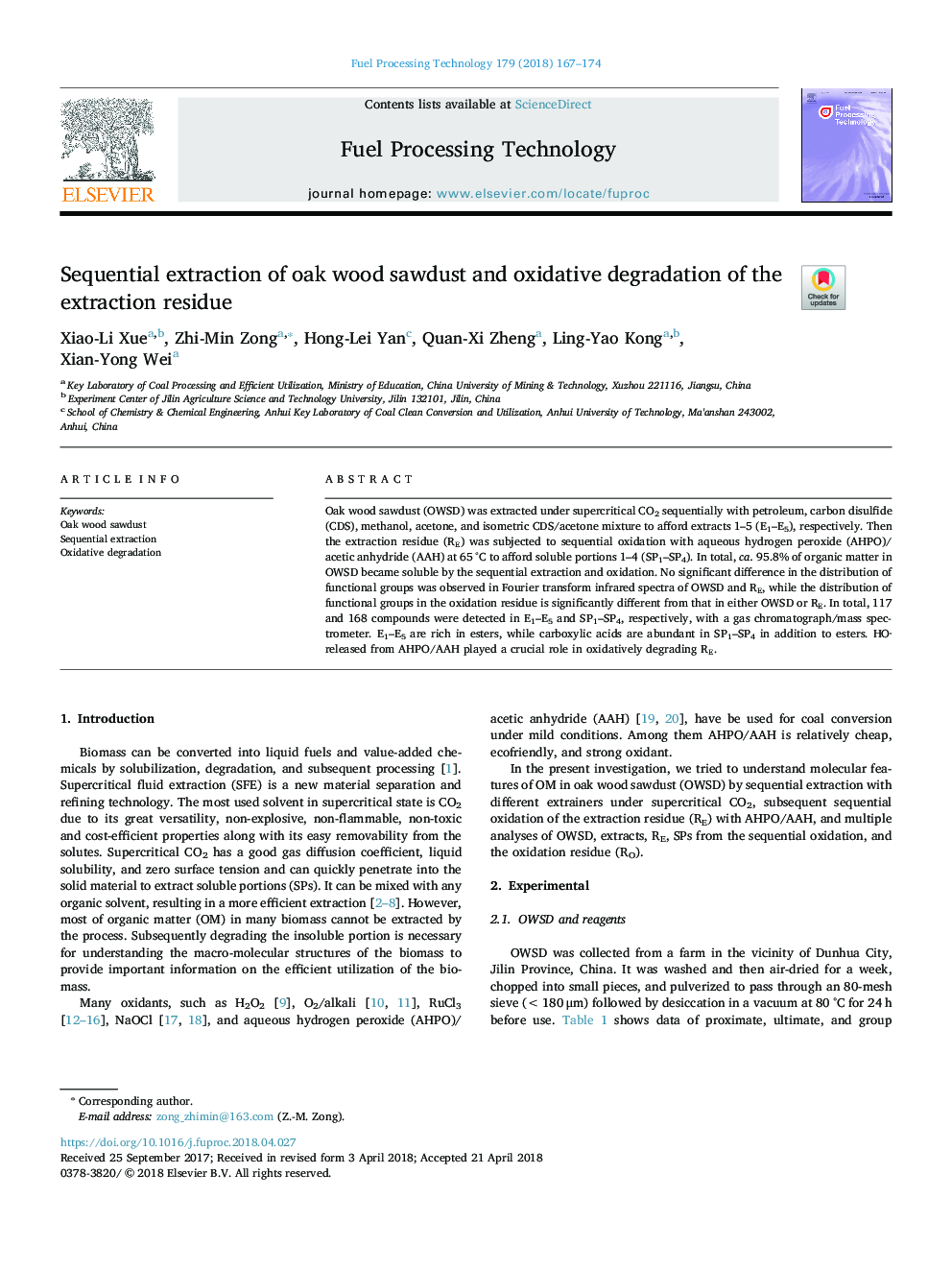| Article ID | Journal | Published Year | Pages | File Type |
|---|---|---|---|---|
| 11000586 | Fuel Processing Technology | 2018 | 8 Pages |
Abstract
Oak wood sawdust (OWSD) was extracted under supercritical CO2 sequentially with petroleum, carbon disulfide (CDS), methanol, acetone, and isometric CDS/acetone mixture to afford extracts 1-5 (E1-E5), respectively. Then the extraction residue (RE) was subjected to sequential oxidation with aqueous hydrogen peroxide (AHPO)/acetic anhydride (AAH) at 65â¯Â°C to afford soluble portions 1-4 (SP1-SP4). In total, ca. 95.8% of organic matter in OWSD became soluble by the sequential extraction and oxidation. No significant difference in the distribution of functional groups was observed in Fourier transform infrared spectra of OWSD and RE, while the distribution of functional groups in the oxidation residue is significantly different from that in either OWSD or RE. In total, 117 and 168 compounds were detected in E1-E5 and SP1-SP4, respectively, with a gas chromatograph/mass spectrometer. E1-E5 are rich in esters, while carboxylic acids are abundant in SP1-SP4 in addition to esters. HO· released from AHPO/AAH played a crucial role in oxidatively degrading RE.
Related Topics
Physical Sciences and Engineering
Chemical Engineering
Chemical Engineering (General)
Authors
Xiao-Li Xue, Zhi-Min Zong, Hong-Lei Yan, Quan-Xi Zheng, Ling-Yao Kong, Xian-Yong Wei,
